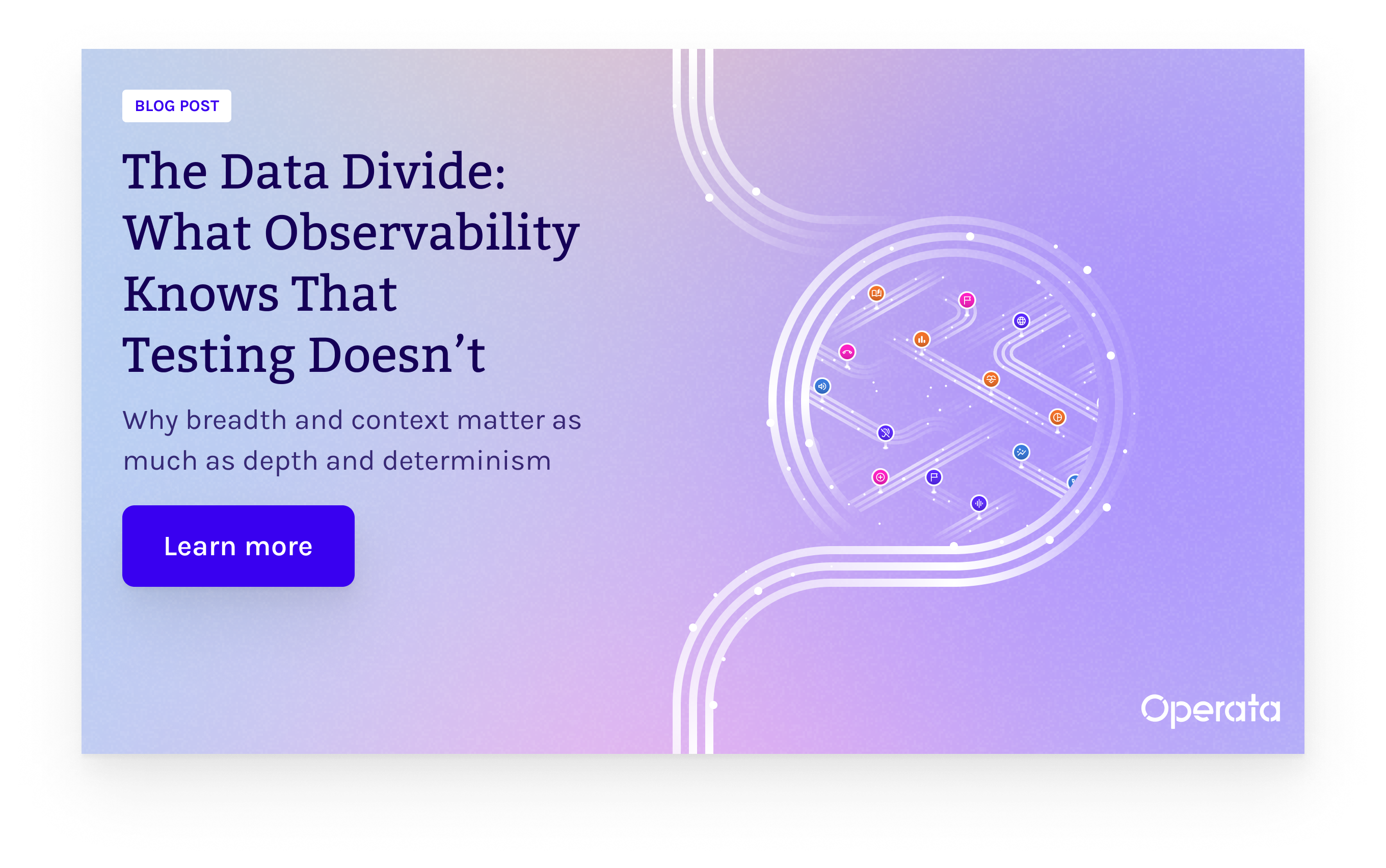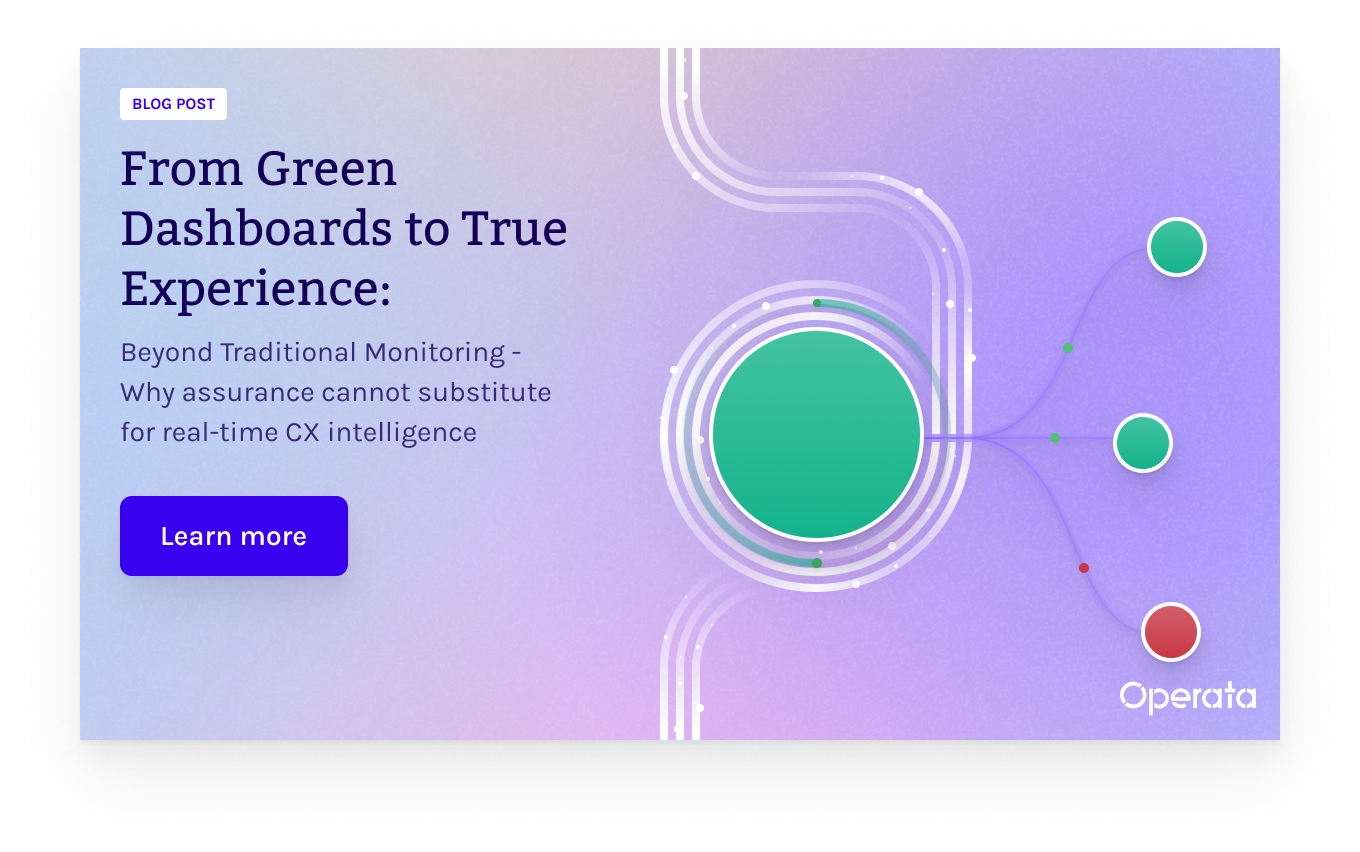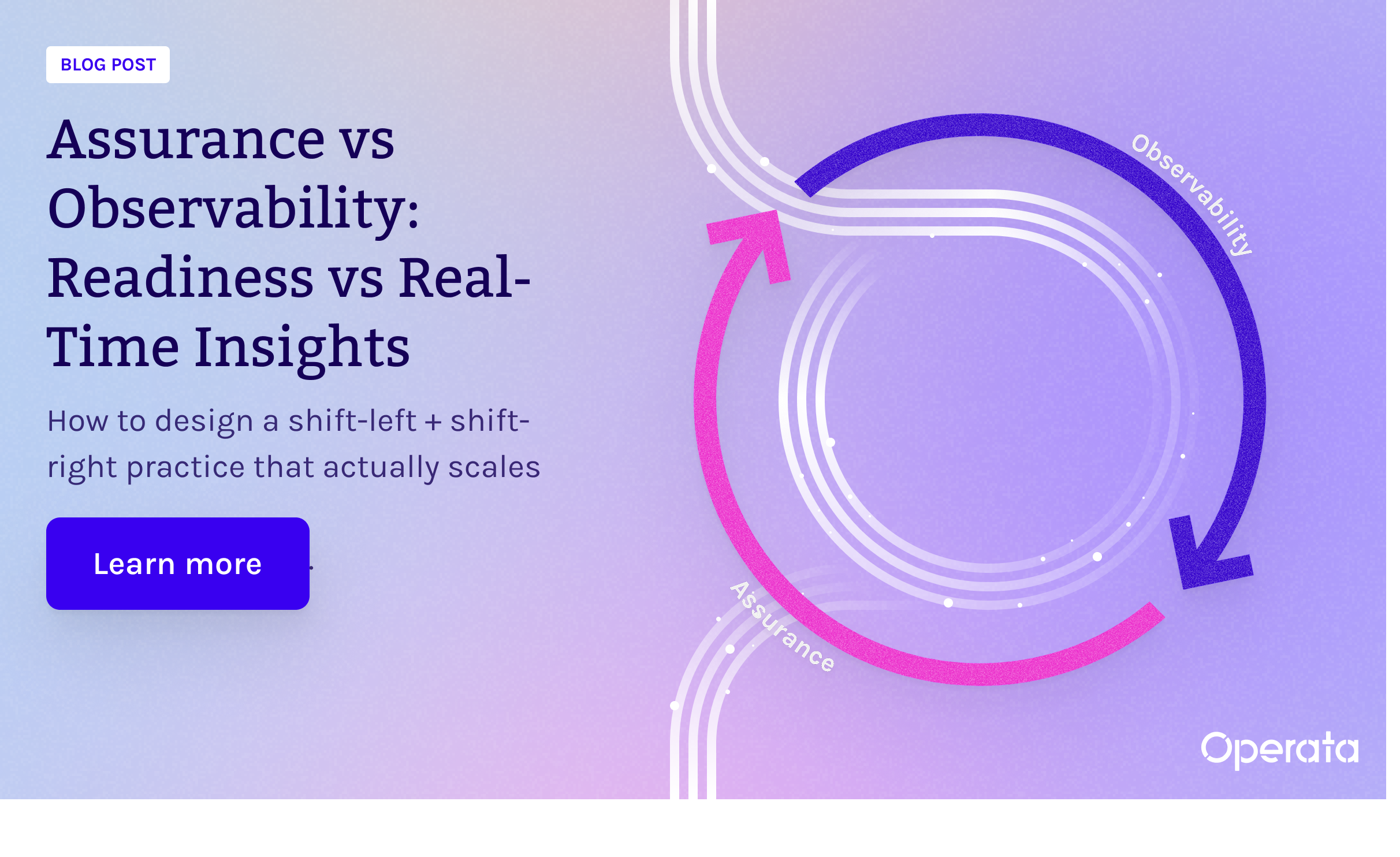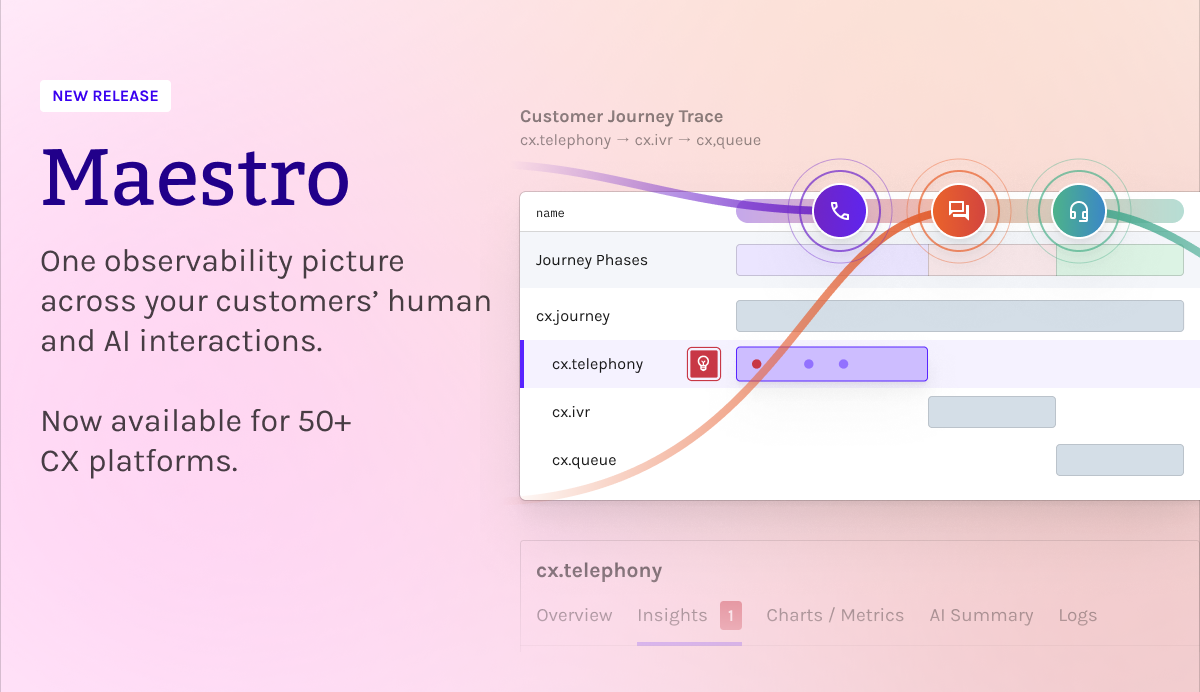TL;DR
Continuous testing validates what we expect to happen; observability measures what actually happens. Scripted assurance is crucial for release safety, but it’s blind to real-world variability: agent endpoints, carriers, browsers, headsets, and AI behavior. CX observability captures highly granular telemetry for every call and correlates signals so teams can detect, diagnose and fix customer-impacting issues fast. Operata was built to bridge that gap by instrumenting agents and analyzing every second of every call for actionable insight.
The fundamental difference: “Should this work?” vs “Is this working right now?”
Continuous testing tools answer a narrow, vital question: “Should this work under controlled conditions?” That’s readiness, a preflight check that prevents many regressions.
Observability asks a different, operationally critical question: “Is the live system delivering a good experience for real customers, right now?” This is vigilance, continuous, production-grade measurement and correlation across the entire customer journey.
Both matter. The trap is treating them as interchangeable.
Why continuous testing falls short for modern CX
Synthetic or scripted testing is deterministic by design. That design creates blind spots when real systems are:
- Disparate at the edge. Agents use diverse browsers, headsets, VPNs and home networks; customers call from varied devices and ISPs. Tests rarely reproduce that diversity.
- Subject to intermittent external failures. Carriers and third-party APIs can degrade intermittently (regionally or by time-window). Periodic probes can miss transient, high-impact problems.
- AI-driven and non-deterministic. Machine learning models drift and produce probabilistic outputs; canonical test utterances won’t surface subtle regressions.
- High-variety of problems. Issues that affect a small cohort (a dialect, a headset model, an ISP) can be critical but invisible to coarse tests.
A dashboard full of green synthetic checks is not the same as a healthy customer experience.
Real-world examples (not hypotheticals)
Regional carrier packet loss
A carrier route intermittently drops packets during weekday peaks. A synthetic test that runs periodically may miss the problem window; observability shows the MOS degradation pattern across hundreds of live calls and ties impact to the carrier and time window.
Agent endpoint CPU spikes
A browser extension causes CPU spikes for a subset of agents, producing audio distortion. Server-side tests never see agent CPU; only agent-level telemetry reveals the root cause.
AI regression on a minority dialect
An AI update increases overall intent recognition but regresses on a specific dialect. Standard test utterances pass; observability surfaces the cohort regression in real traffic and links it to escalations and CSAT drops
What true CX observability brings
Observability captures Highly granular telemetry for every real interaction and correlates it across layers:
- Per-call audio metrics (MOS, jitter, packet loss)
- Agent device and browser telemetry (CPU, extensions, headset metadata)
- Network and carrier traces
- CCaaS events and contact flow steps
- AI signals (confidence, misclassifications)
- Business outcomes (abandon rate, handle time, CSAT)
Correlation is the magic: observability turns an elevated abandon rate into a diagnosable cause (e.g., “packet loss on ISP Y affecting agents in Office Z”), enabling prioritized, impact-based remediation.
How Operata bridges testing and real-time intelligence
Operata was purpose-built to close the gap between assurance and observability. The platform instruments the agent endpoint and integrates tightly with CCaaS APIs, collecting telemetry from both the agent and call paths so teams can analyze every second of every call and understand true customer experience, not simply scripted pass/fail results .
Operational points of differentiation:
- Agent-side collector: lightweight browser instrumentation captures real-endpoint signals (CPU, headset, browser events) for accurate root-cause analysis .
- End-to-end correlation: call-level context plus platform events ties technical signals to who was affected and why.
- Actionable alerts and playbooks: prioritize fixes by customer impact rather than raw metric severity.
Operational benefits: measurable improvements
When teams combine continuous testing with CX observability, they realize:
- Faster detection and diagnosis = shorter MTTR.
- Higher ROI on fixes = resolve what hurts customers most.
- Safer, faster change = tests prevent regressions; observability validates reality.
- Better AI governance = detect model drift and regressions in production quickly.
A practical roadmap: integrate testing and observability
- Keep and expand your assurance suite. Continue using your synthetic assurance tools for pre-deploy safety.
- Instrument the edge. Deploy agent collectors to gather device and browser telemetry.
- Correlate and prioritize. Tie technical metrics to impacted queues, customers and business outcomes.
- Close the loop. Convert observability discoveries into regression tests and CI gates.
- Automate remediation. Use playbooks to reduce human toil and speed recovery.
Continuous testing is a critical safety net, but it cannot substitute for the operational nervous system that CX observability provides. Observability is the real-time intelligence that ensures customers actually receive the experience your tests promise.
Operata helps you instrument the agent, collect the call-level telemetry you need, and close the loop between tests and production evidence. Want us to adapt your test matrix to feed Operata-driven alerts and close the loop between testing and real-world validation? Get in touch and we’ll show you how to convert tests into measurable customer outcomes.
FAQ
Q: Can observability replace synthetic testing?
A: No - observability complements testing. Tests prevent known regressions; observability finds unknown production issues and feeds them back into tests.
Q: What telemetry is most important for CX observability?
A: Per-call audio metrics, agent device/browser telemetry, CCaaS events, carrier/network traces, AI signals, and business outcomes.
Q: How does Operata capture agent signals?
A: Operata uses a lightweight browser collector for agent telemetry and integrates with CCaaS APIs to capture end-to-end call context and “every second of every call”.

















